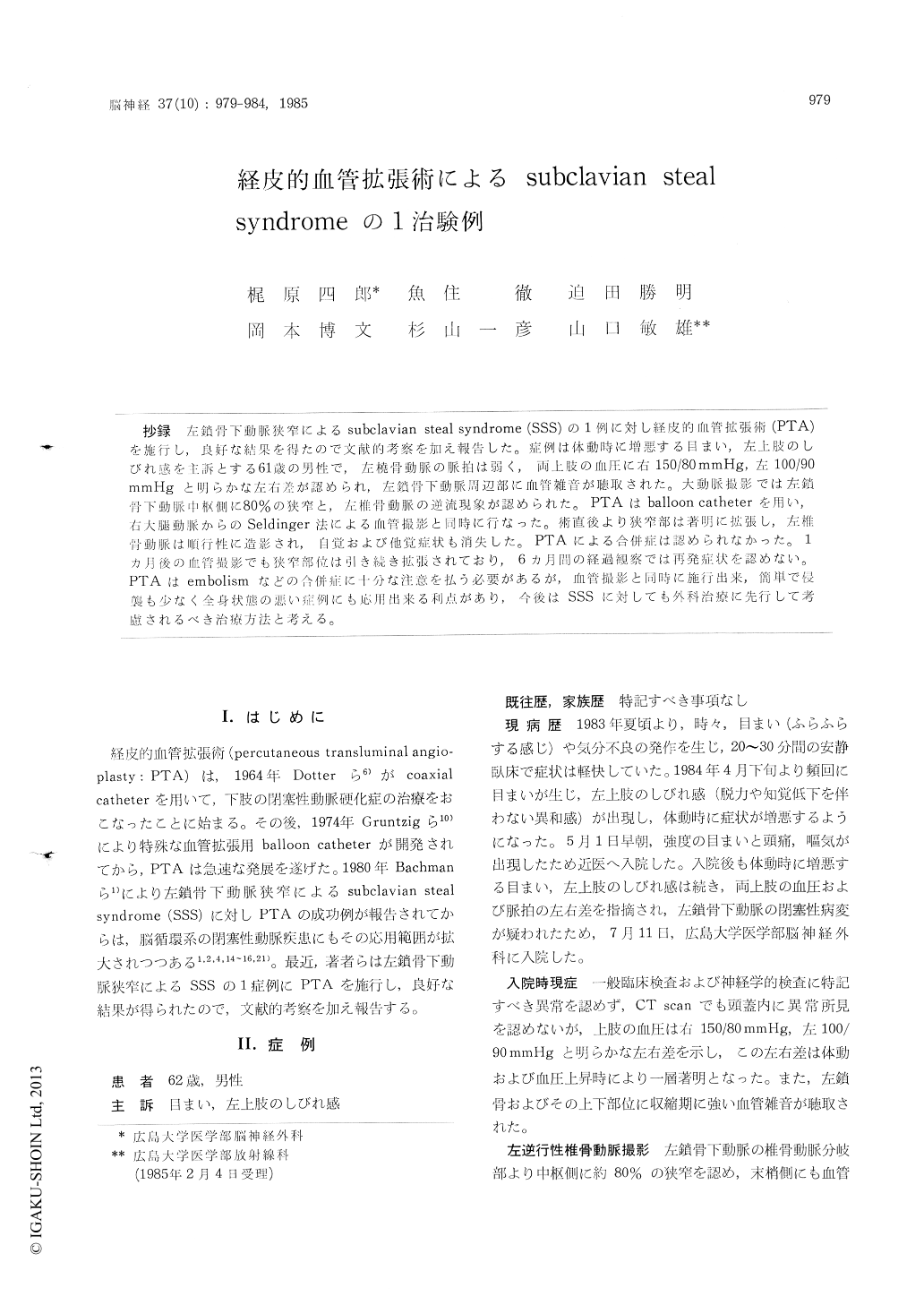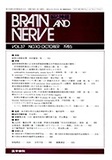Japanese
English
- 有料閲覧
- Abstract 文献概要
- 1ページ目 Look Inside
抄録 左鎖骨下動脈狭窄によるsubclavian steal syndrome (SSS)の1例に対し経皮的血管拡張術(PTA)を施行し,良好な結果を得たので文献的考察を加え報告した。症例は体動時に増悪する目まい,左上肢のしびれ感を主訴とする61歳の男性で,左橈骨動脈の脈拍は弱く,両上肢の血圧に右150/80mmHg,左100/90mmHgと明らかな左右差が認められ,左鎖骨下動脈周辺部に血管雑音が聴取された。大動脈撮影では左鎖骨下動脈中枢側に80%の狭窄と,左椎骨動脈の逆流現象が認められた。PTAはballoon catheterを用い,右大腿動脈からのSeldinger法による血管撮影と同時に行なった。術直後より狭窄部は著明に拡張し,左椎骨動脈は順行性に造影され,自覚および他覚症状も消失した。PTAによる合併症は認められなかった。1カ月後の血管撮影でも狭窄部位は引き続き拡張されており,6ヵ月間の経過観察では再発症状を認めない。PTAはembolismなどの合併症に十分な注意を払う必要があるが,血管撮影と同時に施行出来,簡単で侵襲も少なく全身状態の悪い症例にも応用出来る利点があり,今後はSSSに対しても外科治療に先行して考慮されるべき治療方法と考える。
It has been known that signficant narrowing of the subclavian or innominate artery may cause cerebrovascular ischemic symptoms, especially ver-tebrobasilar insufficiency. This condition has been named as the subclavian steal syndrome (SSS). Recently, percutaneous transluminal angioplasty (PTA) has been developed and used in treating occlusive vascular lesions.
In this report, we presented a 61-year-old man who suffered from SSS and treated by PTA. He complained of dizziness and dysesthesia on his left upper extremity which got worse on exertion. The left radial pulse was diminished and the left brachial blood pressure was lower about 50 mmHg than the right. Bruits were recognized over the left suprasubclavicular area. Arch aortogram revealed an 80% stenosis of the proximal left subclavian artery and retrograde flow of the left vertebral artery on late arterial phase. PTA was successfully performed at the same time as angiography via the right femoral artery without any complications. His clinical symptoms improved immediately following PTA. A month after PTA, left retrograde vetebral angiogram demonstrated that the dilation of the treated segment of the left subclavian artery continuously remained.
Because of several advantages such as a technical easiness and a more safety, PTA will be a useful therapeutic tool for not only SSS but also other obstructive diseases of brachiocephalic arteries prior to some surgical treatments. However, it is necessary to avoid some possible complicatitions, especially embolism into the cerebral circulation in this technique, and the careful procedure should be done under the co-operation with vascular surgeons and radiologists.

Copyright © 1985, Igaku-Shoin Ltd. All rights reserved.


